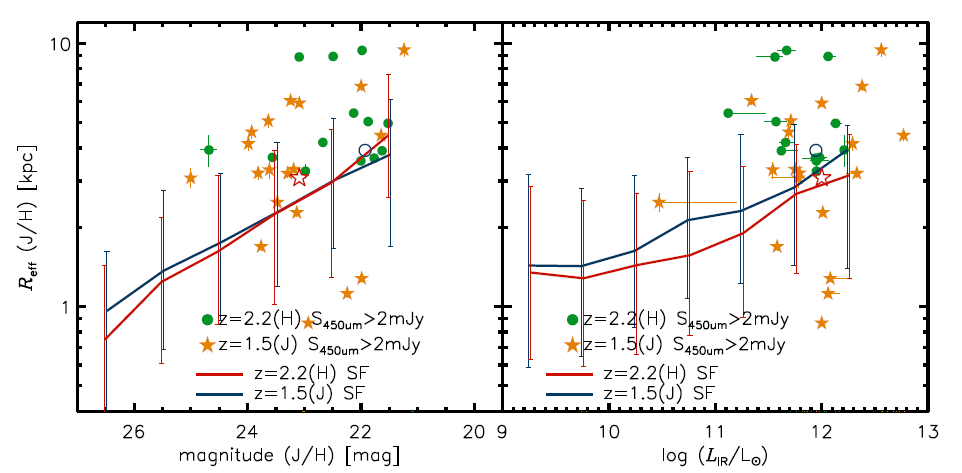The population known as “submillimeter galaxies” (SMGs) was first discovered using the SCUBA on the JCMT Telescope at 850μm. SMGs are understood to be a population of massive, dust-enshrouded systems which are forming stars at rates of 100-1,000 times faster than the Milky Way currently does. However, there's a problem! The typical angular resolution of single-dish observation at 850μm is 15–30''. Therefore, it is a challenge for us to analyse the morphology and then to study the mechanism(s) trigger the starburst in SMGs. With the SCUBA-2/JCMT observation at 450μm, which is deeper than that at 850μm because of the roughly two times higher angular resolution and therefore lower confusion limit, Dr Yu-Yen Chang (a postdoctoral researcher at ASIAA) and her collaborators, including Fangxia An and Yiping Ao from PMO, detail studied the structural properties and NIR morphologies of 450μm-detected SMGs. They found that the SMGs and star-forming galaxies show high fractions (~70%) of disturbed features at z=2, which suggest that their star formation activity is related to galaxy merging and the stellar structures of SMGs are similar to those of star-forming galaxies. 
By with AN Fangxia Fig. Visual classification of the 450μm detected sources and 850μm sources. The comparison star-forming galaxies are matched to stellar mass and SFR (left panel), as well as sSFR (right panel). Most of the SMGs contain merger features, similarly or slightly more frequently than the comparison sample. For more detail and information about this work, seen in: http://iopscience.iop.org/article/10.3847/1538-4357/aadd18/pdf |
